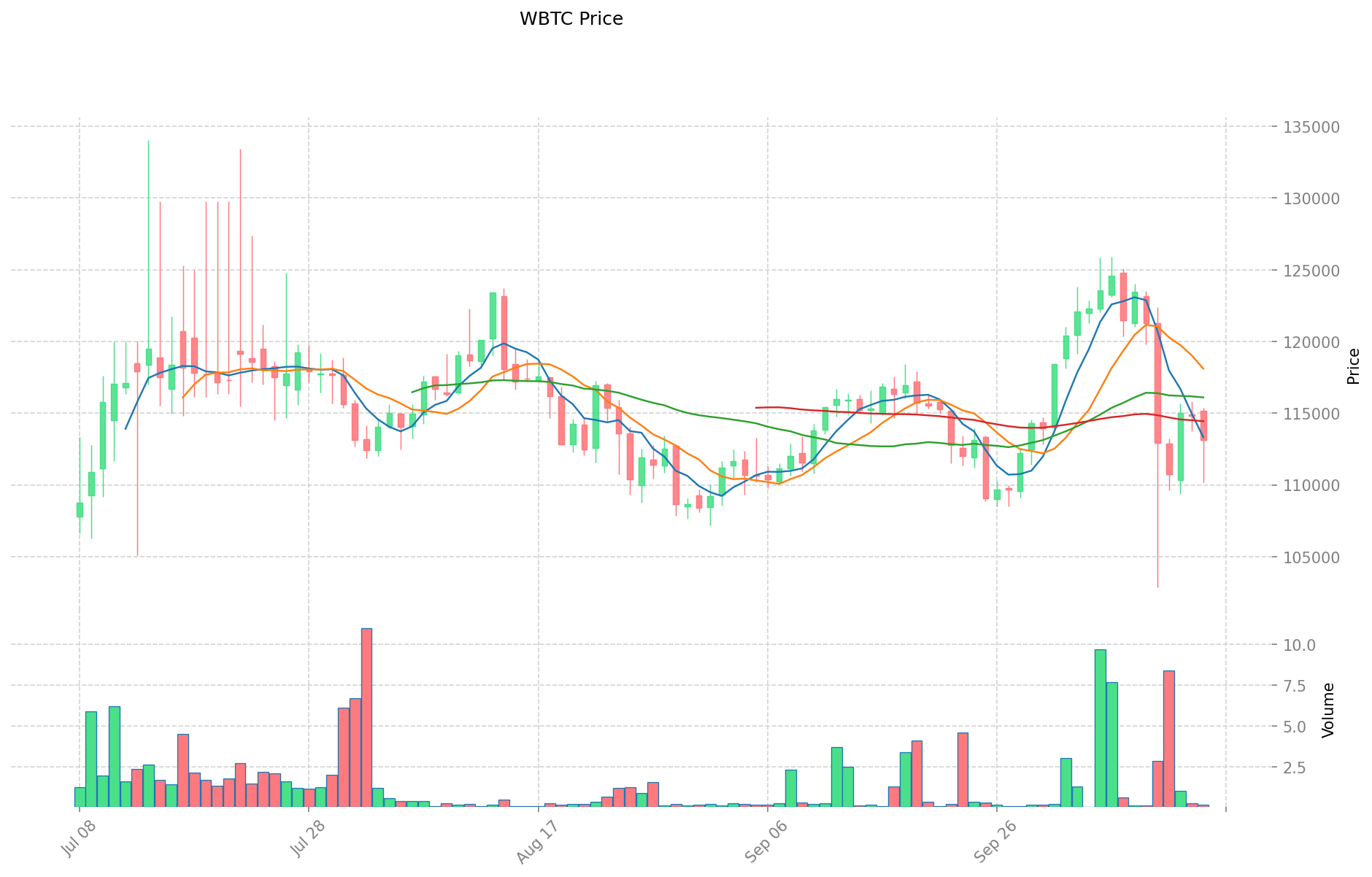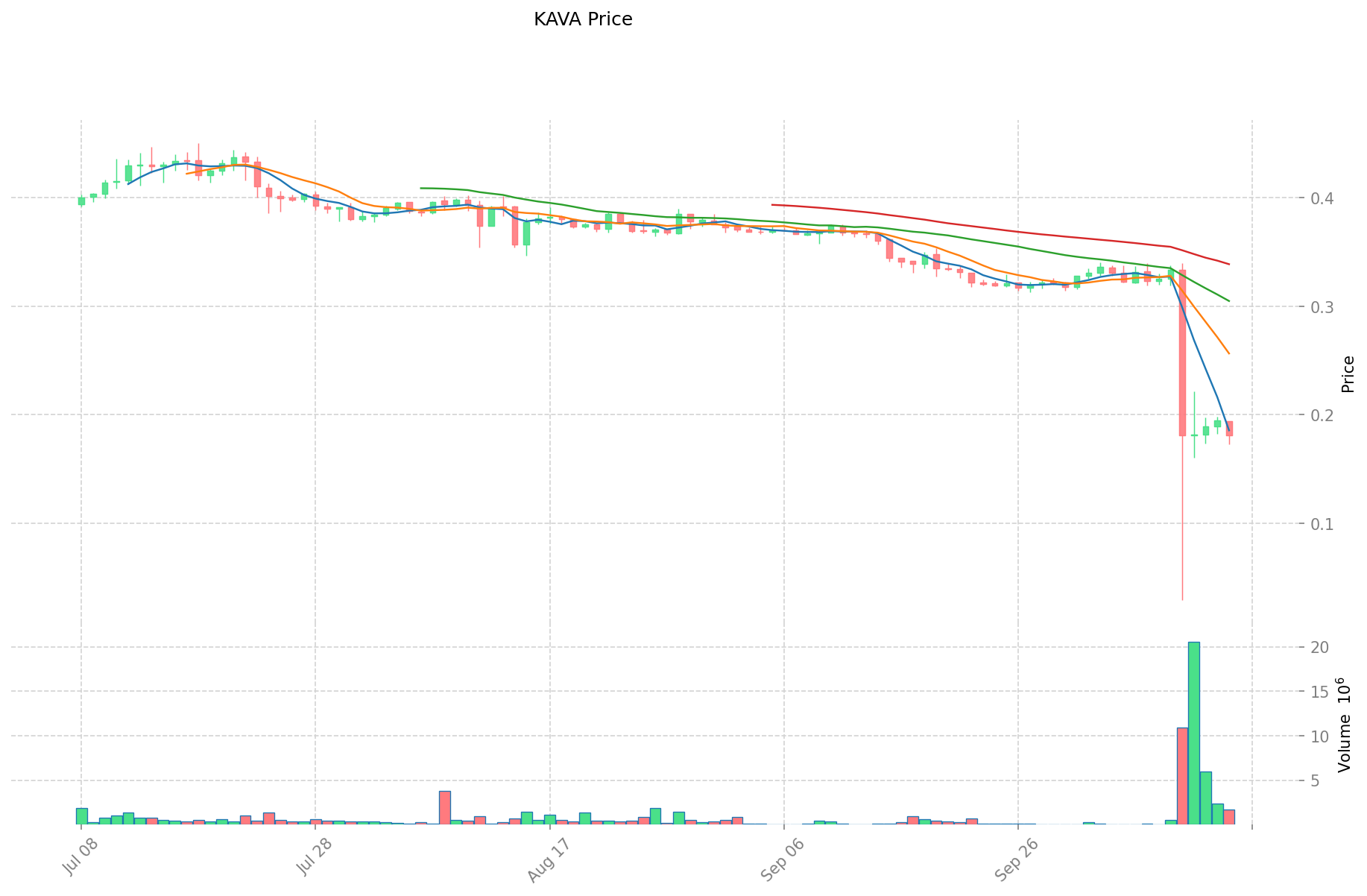WBTC vs KAVA: Comparing Two Innovative Cryptocurrency Solutions for Cross-Chain Interoperability
Introduction: WBTC vs KAVA Investment Comparison
In the cryptocurrency market, the comparison between WBTC vs KAVA has been an unavoidable topic for investors. The two not only show significant differences in market cap ranking, application scenarios, and price performance, but also represent different positions in the crypto asset landscape.
WBTC (Wrapped Bitcoin): Since its launch in 2019, it has gained market recognition for bringing Bitcoin's liquidity to the Ethereum ecosystem.
KAVA (KAVA): Introduced in 2019, it has been touted as a cross-chain DeFi platform, offering lending and stablecoin services for mainstream digital assets.
This article will comprehensively analyze the investment value comparison between WBTC vs KAVA, focusing on historical price trends, supply mechanisms, institutional adoption, technological ecosystems, and future predictions, attempting to answer the question most concerning to investors:
"Which is the better buy right now?" I. Price History Comparison and Current Market Status
WBTC and KAVA Historical Price Trends
- 2023: WBTC price fluctuated due to overall cryptocurrency market volatility.
- 2024: KAVA experienced price movements influenced by developments in the DeFi sector.
- Comparative analysis: During the recent market cycle, WBTC reached a high of $125,932 and a low of $3,139.17, while KAVA showed different price behavior.
Current Market Situation (2025-10-15)
- WBTC current price: $112,279.8
- KAVA current price: $0.17827
- 24-hour trading volume: WBTC $16,664.45448 vs KAVA $252,256.4035225
- Market Sentiment Index (Fear & Greed Index): 34 (Fear)
Click to view real-time prices:
- Check WBTC current price Market Price
- Check KAVA current price Market Price


II. Core Factors Affecting WBTC vs KAVA Investment Value
Supply Mechanism Comparison (Tokenomics)
- WBTC: Pegged 1:1 to Bitcoin with equivalent supply mechanics, representing Bitcoin's value in ERC-20 token format
- KAVA: Native token of the Kava platform with supply determined by platform governance and usage
- 📌 Historical pattern: WBTC follows Bitcoin's price movements while KAVA's value is driven by platform adoption and DeFi usage.
Institutional Adoption and Market Applications
- Institutional holdings: WBTC typically attracts more institutional interest due to its connection to Bitcoin
- Enterprise adoption: WBTC serves as a Bitcoin representation within DeFi ecosystems, while KAVA functions as a utility token within its lending platform
- Regulatory attitudes: Varies by jurisdiction with WBTC generally following Bitcoin's regulatory framework
Technical Development and Ecosystem Building
- WBTC technical integration: 2022 integration with Kava platform enabling users to leverage Bitcoin value within the Kava ecosystem
- KAVA technical development: Built on Cosmos blockchain providing crypto collateralization and USDX stablecoin issuance capabilities
- Ecosystem comparison: Both operate in DeFi space with KAVA focusing on lending and staking services while WBTC brings Bitcoin liquidity to various DeFi applications
Macroeconomic Factors and Market Cycles
- Inflation performance: WBTC inherits Bitcoin's inflation-resistant properties while KAVA's value depends more on DeFi market conditions
- Macroeconomic monetary policy: Interest rates affect both, with WBTC typically following Bitcoin's correlation to broader markets
- Geopolitical factors: Cross-border transaction demand impacts both tokens' utility in international financial applications
III. 2025-2030 Price Prediction: WBTC vs KAVA
Short-term Prediction (2025)
- WBTC: Conservative $102,172 - $112,277 | Optimistic $112,277 - $148,206
- KAVA: Conservative $0.092 - $0.178 | Optimistic $0.178 - $0.255
Mid-term Prediction (2027)
- WBTC may enter a bull market, with prices expected in the range of $84,240 - $207,593
- KAVA may enter a growth phase, with prices expected in the range of $0.242 - $0.273
- Key drivers: Institutional inflows, ETF developments, ecosystem growth
Long-term Prediction (2030)
- WBTC: Base scenario $176,354 - $191,689 | Optimistic scenario $191,689 - $228,111
- KAVA: Base scenario $0.255 - $0.370 | Optimistic scenario $0.370 - $0.507
Disclaimer: The above predictions are based on historical data and market analysis. Cryptocurrency markets are highly volatile and subject to change. This information should not be considered as financial advice.
WBTC:
| 年份 | 预测最高价 | 预测平均价格 | 预测最低价 | 涨跌幅 |
|---|---|---|---|---|
| 2025 | 148206.696 | 112277.8 | 102172.798 | 0 |
| 2026 | 170617.34488 | 130242.248 | 98984.10848 | 15 |
| 2027 | 207593.1190872 | 150429.79644 | 84240.6860064 | 33 |
| 2028 | 184381.801496508 | 179011.4577636 | 98456.30176998 | 59 |
| 2029 | 201683.25888935994 | 181696.629630054 | 152625.16888924536 | 61 |
| 2030 | 228111.0336690512943 | 191689.94425970697 | 176354.7487189304124 | 70 |
KAVA:
| 年份 | 预测最高价 | 预测平均价格 | 预测最低价 | 涨跌幅 |
|---|---|---|---|---|
| 2025 | 0.2554123 | 0.17861 | 0.0928772 | 0 |
| 2026 | 0.299475387 | 0.21701115 | 0.1150159095 | 21 |
| 2027 | 0.27373786461 | 0.2582432685 | 0.24274867239 | 44 |
| 2028 | 0.36440707618035 | 0.265990566555 | 0.1542745286019 | 49 |
| 2029 | 0.425518408846361 | 0.315198821367675 | 0.299438880299291 | 76 |
| 2030 | 0.507391302696614 | 0.370358615107018 | 0.255547444423842 | 107 |
IV. Investment Strategy Comparison: WBTC vs KAVA
Long-term vs Short-term Investment Strategy
- WBTC: Suitable for investors seeking Bitcoin exposure in DeFi ecosystems
- KAVA: Suitable for investors interested in cross-chain DeFi platforms and lending services
Risk Management and Asset Allocation
- Conservative investors: WBTC: 70% vs KAVA: 30%
- Aggressive investors: WBTC: 50% vs KAVA: 50%
- Hedging tools: Stablecoin allocation, options, cross-currency portfolios
V. Potential Risk Comparison
Market Risk
- WBTC: Highly correlated with Bitcoin price volatility
- KAVA: Susceptible to DeFi market fluctuations and platform-specific risks
Technical Risk
- WBTC: Scalability issues inherited from Ethereum network, smart contract vulnerabilities
- KAVA: Cross-chain security risks, potential bugs in lending protocols
Regulatory Risk
- Global regulatory policies may impact both tokens differently, with WBTC following Bitcoin's regulatory framework more closely
VI. Conclusion: Which Is the Better Buy?
📌 Investment Value Summary:
- WBTC advantages: Bitcoin exposure in DeFi, institutional recognition, potential for long-term value preservation
- KAVA advantages: Cross-chain DeFi functionality, potential for high growth in emerging DeFi markets
✅ Investment Advice:
- New investors: Consider a higher allocation to WBTC for more stability and Bitcoin exposure
- Experienced investors: Balance portfolio with both WBTC and KAVA based on risk tolerance
- Institutional investors: WBTC may be more suitable due to its connection to Bitcoin and broader market acceptance
⚠️ Risk Warning: Cryptocurrency markets are highly volatile. This article does not constitute investment advice. None
VII. FAQ
Q1: What is the main difference between WBTC and KAVA? A: WBTC is a wrapped version of Bitcoin on the Ethereum network, representing Bitcoin's value in ERC-20 token format. KAVA is a native token of the Kava platform, designed for cross-chain DeFi functionality, lending, and stablecoin services.
Q2: Which token has shown better price performance historically? A: WBTC, being pegged to Bitcoin, has shown higher price levels and follows Bitcoin's price movements. KAVA's price performance has been more volatile and dependent on DeFi market conditions and platform adoption.
Q3: How do institutional investors view WBTC compared to KAVA? A: Institutional investors typically show more interest in WBTC due to its direct connection to Bitcoin and its representation of Bitcoin's value in DeFi ecosystems. KAVA, while having potential in the DeFi space, generally attracts less institutional attention.
Q4: What are the main risks associated with investing in WBTC and KAVA? A: WBTC's main risks include high correlation with Bitcoin's price volatility and potential smart contract vulnerabilities. KAVA faces risks related to DeFi market fluctuations, cross-chain security issues, and potential bugs in lending protocols.
Q5: How might regulatory changes affect WBTC and KAVA differently? A: Regulatory changes are likely to affect WBTC in a manner similar to Bitcoin, as it represents Bitcoin's value. KAVA may be more susceptible to DeFi-specific regulations and cross-border transaction policies, potentially impacting its utility and adoption.
Q6: Which token is more suitable for long-term investment? A: WBTC is generally considered more suitable for long-term investment due to its connection to Bitcoin and potential for value preservation. However, KAVA may offer higher growth potential in the emerging DeFi market, making it attractive for investors with higher risk tolerance.
Q7: How do the supply mechanisms of WBTC and KAVA differ? A: WBTC's supply is pegged 1:1 to Bitcoin, following Bitcoin's supply mechanics. KAVA's supply is determined by the Kava platform's governance and usage, making it more flexible but potentially more inflationary.